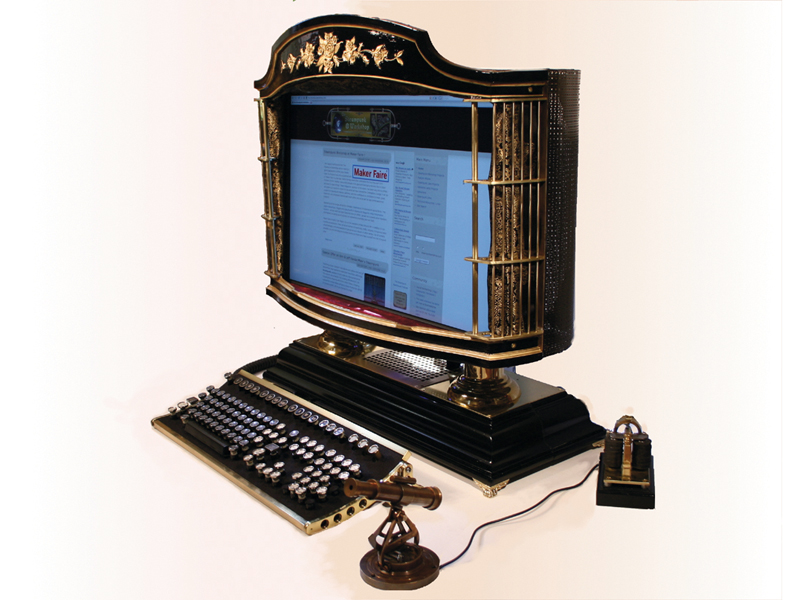
Picture a world where the family PC sports brass pressure gauges to indicate CPU speed and temperature, where LCD displays resemble intricate dressing-table mirrors and where electricity hasn't yet replaced steam as the workhorse of industry.
Welcome to the world of Steampunk – a curiously high-tech mix of Jules Verne and Silicon Valley. Steampunk style encompasses fashion, art, music and literature.
The concept involves redesigning items of modern consumer technology to make them look as if they had been built 150 years ago using the materials of the time: brass, copper, steam and cogs.
In short, this is how the modern PC might have looked if it had been invented by Isambard Kingdom Brunel rather than IBM.
Turning junk into jewels
"It began as a rough idea for a computer that looked like some sort of old mechanical apparatus in a workshop," says Australian Steampunk engineer Cliff Overton of the case design he calls the Communicator.
"I thought that a central hub or spine could carry all the cables and that each component could branch off the spine," he recalls. "I guess it's sort of inspired by those old scary dentists' machines that looked like robots with long spindly arms."
Sign up for breaking news, reviews, opinion, top tech deals, and more.
Overton's Antipodean Steampunk Adventures blog documents the whole process of creating this unique PC. Yet perhaps the most interesting thing about this radical redesign is that it's highly functional as well as being distinctive and decorative.
Plugs and sockets usually hidden around the back of the case – or otherwise out of sight – are on full display and easily accessible. Remarkably, the case's design evolved according to the availability of items that fitted into Overton's initial theme for the modification.
"I wanted to build something industrial," says Overton. "It would look more at home on a workshop bench with tools scattered around it rather than on a desk. Once I had the theme in my head, it was a case of looking for old parts to put together. I already had a plough disc, so that became the circular base plate. The jackhammer was the real catalyst – I saw it in a wrecker's yard and I knew that I'd found the core of the machine. From then on, the design evolved as I experimented with parts."
While the parts Overton had gathered gave the machine a rough shape, the design still needed a lot of imagination to complete. He used his initiative to find things that fit his concept. "The IDE drive enclosure uses old pressure gauges, plumbing parts and an old bronze mesh strainer from the end of a suction hose," he says.
"The motherboard enclosure uses two pizza trays joined with threaded rod. The four-port USB module was a case of 'the one in the shop uses a cylinder the same size as that bit of brass pipe', so I transferred the components over."

HIDDEN DRIVE: What looks like a pressure gauge on the Communicator actually houses a hard disk
The idea of reusing old junk items to house modern PC components is widespread in Steampunk culture. "A build from scratch that uses off-the-shelf components that are fitted into unusual objects can be great fun," enthuses Overton. "I see a lot of potential enclosures around all the time. For instance, how about using an old upright gramophone case with a screen inside that pops up when you lift the lid?"
But while Overton is happy to use contemporary objects in his designs, other Steampunk enthusiasts have gone even further, sometimes incorporating genuine antiques into their works.
- 1
- 2
Current page: Australian Steampunk engineer Cliff Overton
Next Page Steampunk stalwart Jake Von Slatt